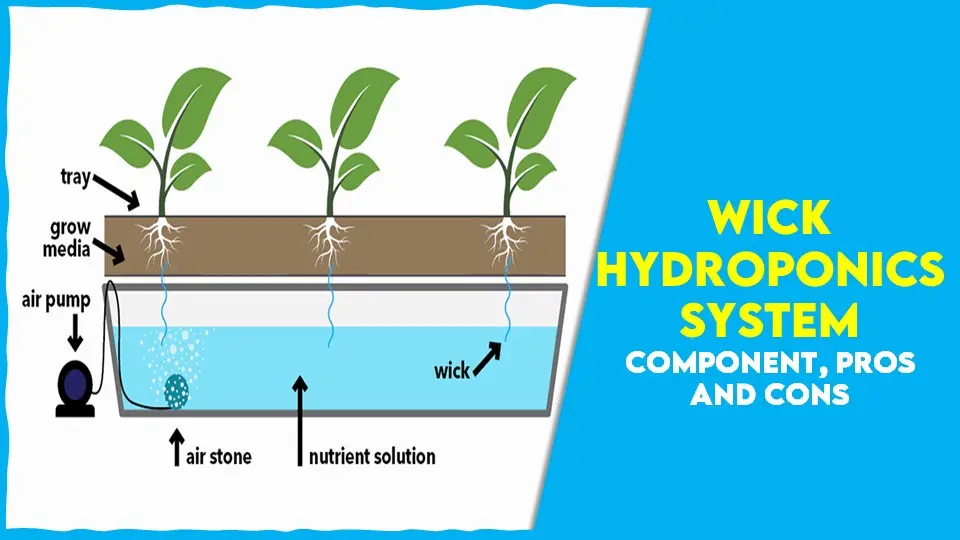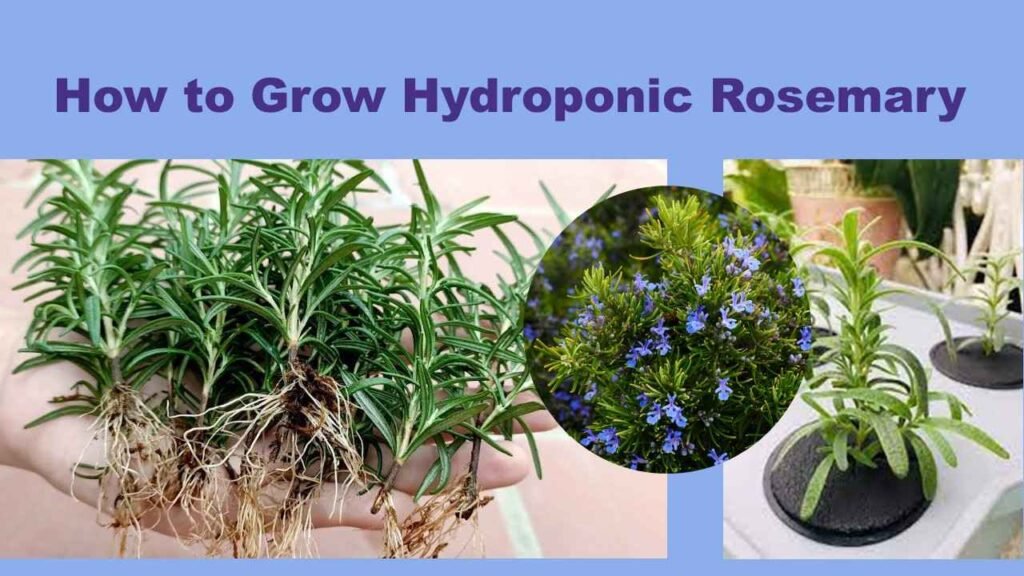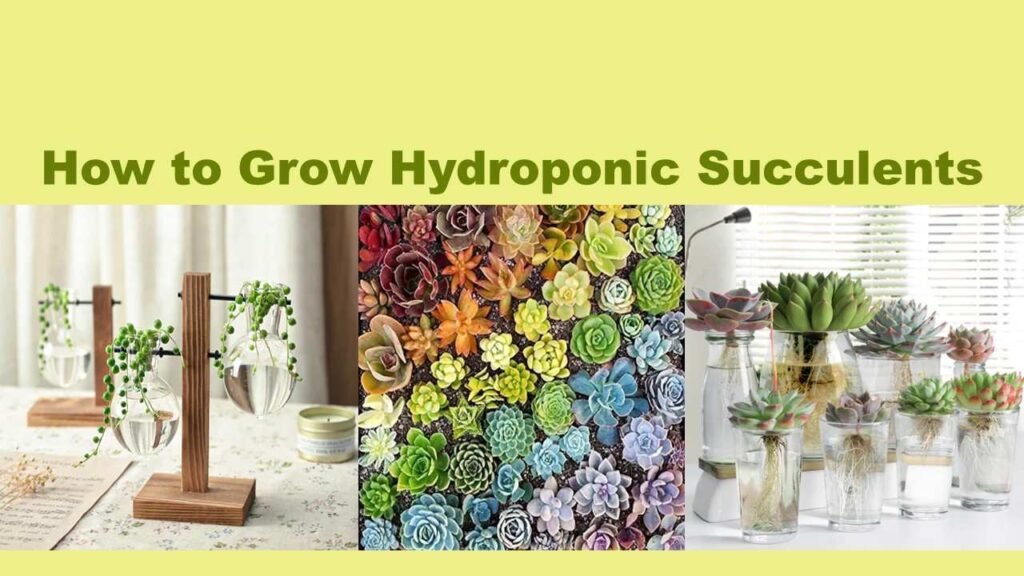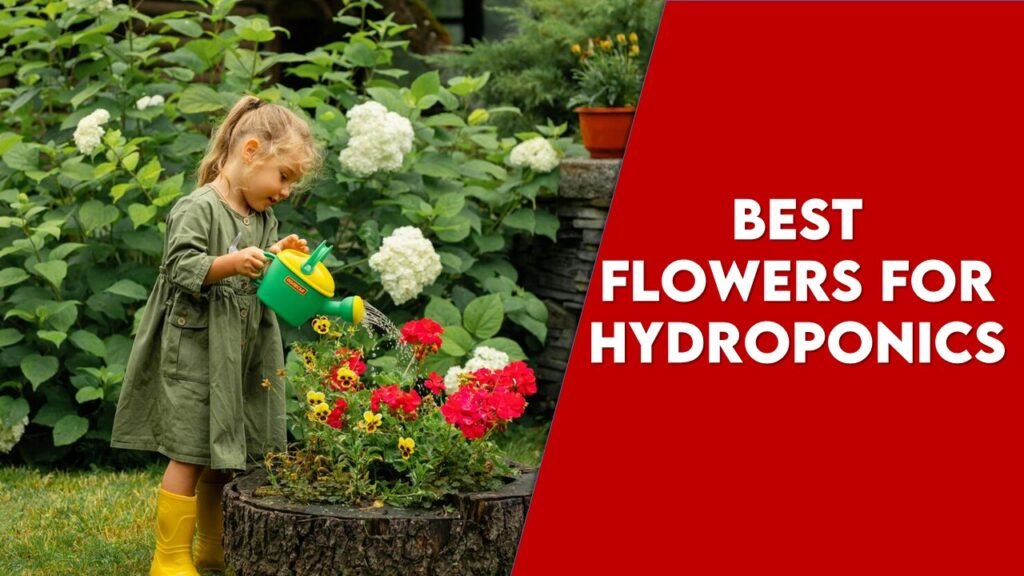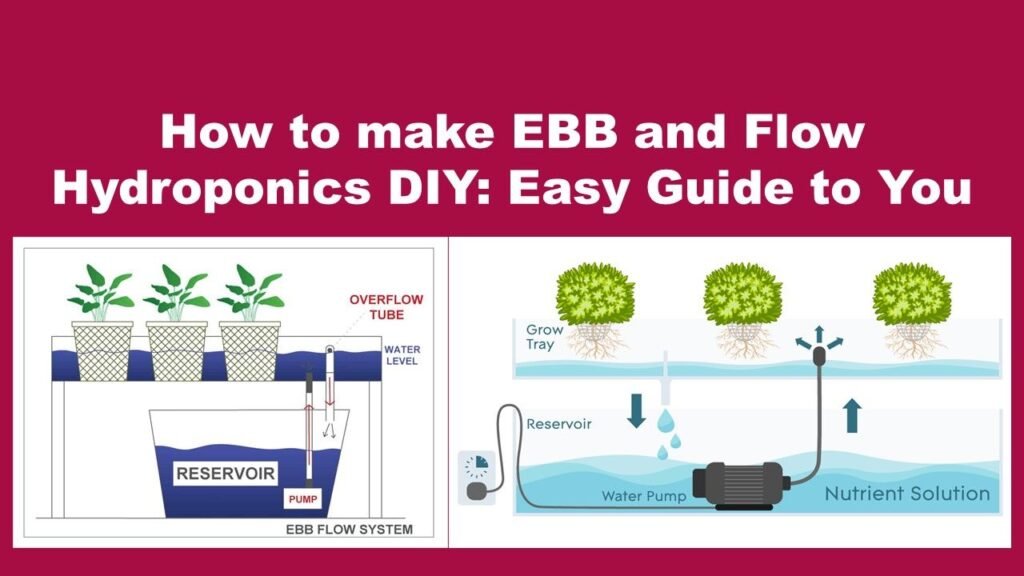Wick Hydroponics System: Component, Pros and Cons
A wick hydroponics system is a growing setup that makes use of a wick—a soft fabric string—and is referred to as a wick system.
A cotton or nylon wick helps in the absorption of water and nutrients from a solution in a wick system, ultimately supplying the plants placed in trays or containers with these vital nutrients. Typically, one end of the wick is placed into the growing medium at the bottom of the tray or container, while the other end is left hanging into a reservoir or container that surrounds the nutritional solution. Water will run up to the wick until the surrounding medium is moist. The wick will start to absorb liquid again as soon as the medium dries out.
Out of various types of hydroponic systems, the wick hydroponics system is the most simple. This is because it doesn’t typically require electricity or pumps because it doesn’t contain any moving parts. Some growers still choose to use the reservoir’s optional air pump, however.
It’s also very helpful in locations where energy is inaccessible or unstable because it doesn’t need electricity to function properly.
wick hydroponic system explained
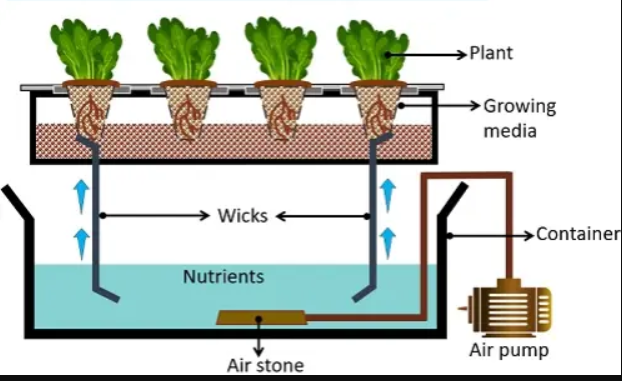
The capillary action is the fundamental working mechanism of wick systems. Capillary activity is important for plant life as it helps to transport water to the roots. The movement of water through a porous medium as a result of surface tension, adhesion, and cohesion is referred to as capillary action. Through this method, it is more easy for the plant to take up nutrients and water.
Wicks hydroponic systems employ capillary action to move water and nutrients from a reservoir of water to plants that are placed in growing media—a substance besides soil. Wicks hydroponic systems employ capillary action to move water and nutrients from a reservoir of water to plants that are placed in growing media—a substance besides soil.
Every plant will have a minimum of one, ideally two, wicks connecting it to the reservoir, which is often placed immediately beneath the plants for maximum efficiency. That is everything to this fundamental wick hydroponics technique.
Key Components of Wick Hydroponics System
Wick Hydroponics Systems typically don’t have any moving parts, therefore they’re passive. Due to this, they are simpler and cheaper to operate than active systems like Ebb and Flow; yet, however, they have certain disadvantages as well, like restricted efficiency and poor suitability for significant plants that require a lot of water. Fast-growing lettuces and herbs are the best plants for use in this kind of arrangement. The best herbs for this kind of system are those that don’t need a lot of water, like rosemary; tomatoes and other plants that require more water don’t grow well.
The grow tray, reservoir, wick, and aeration system are the four primary components of a wick system.
The Grow Tray
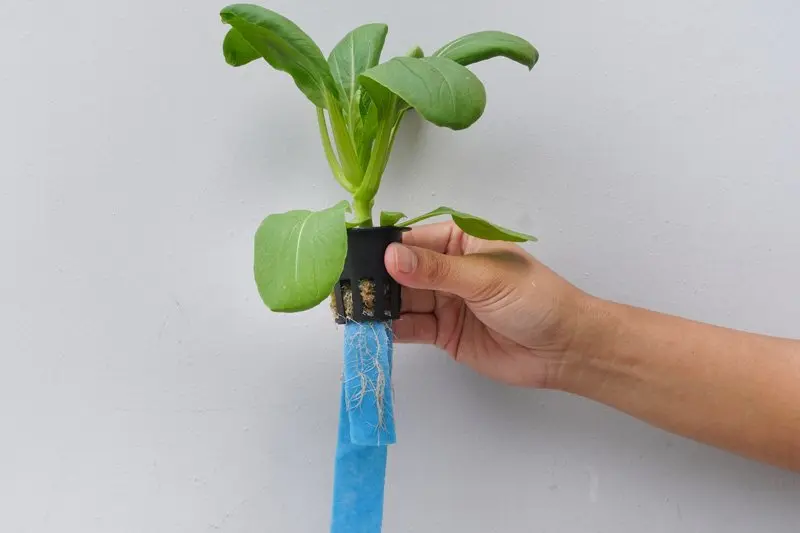
Typically, a Wick Hydroponics System‘s grow tray is different from other hydroponic setups because the growing media is not held in place by net pots. When seedlings are transplanted straight on a tray, the growth material typically occupies the entire tray. The primary kind of growing media to be utilized in this system is one that does not evaporate too quickly and will make the best use of the wick’s capillary action. Some great growing media that can be used are soilless mixtures, vermiculite, and perlite since they drain well without becoming moist like regular soil does.
Selection of Suitable Growing Media:
A number of growing media can be used while working with a wick hydroponics system. Some of the most popular growing mediums that many growers use are perlite, vermiculite, and coconut fiber. Hydroton-expanded clay is among the most favorite growing media for this wick hydroponic system.
Reservoir
Generally, the reservoir is the same as in every other system. It is a large vessel filled with oxygenated water that rests below the grow tray and helps in giving the plants water and nutrients. Around once a week, the reservoir’s water requires to be replenished because the nutrients lose some of their efficacy when the plants consume them.
Wick
Two or more wicks connect the reservoir to the grow tray. The wicks enable the passage of nutrient solution into the growth media and to the plant roots through the use of capillary action. Cotton rope tends to be the best kind of wick to use, but it might ultimately rot or become sensitive to mold. Hence, It is essential to periodically inspect the rope if the system is to be used for extended periods of time. A different choice is to use nylon rope, which is highly effective and doesn’t decay or mold. Some of the usual items that can be utilise as a wick are given as:
- Any kind of fibrous rope,
- Propylene felt strips,
- Tiki torch wicks,
- Mop head strands,
- Wool felt,
- Strips of fabric from disused clothing
Usually, tiny holes are punched inside the grow tray to allow the wicks. To stop more growing media from leaking through the holes, rubber connectors are utilized to ensure that the holes are slightly smaller than the wicks.
The size of the entire system, the plants used, the growing medium, and the wick material are all factors that affect how many wicks are utilized. This allows for the use of one wick per plant, making sure that the wick tips are positioned close to the roots. Two wicks per plant are required for large systems and water-loving plants.
Aeration System
The air stone and pump constitute the most common aeration system in a wick hydroponics system. The air stone is positioned inside the water and connected to an air pump outside the reservoir. The pump forces air through the stone, which leads the tiny bubbles to pop into the water, emitting oxygen throughout it. Since the roots of the plants receive oxygen, it is significant from a sustainability point of view.
Suitable Plants for Wick Hydroponics System

Ideal Leafy Greens: Kale, Spinach, Arugula, Boc Choy, Chard
Ideal Herbs: Parsley, watercress, basil, cilantro, chervil, chives, dill, marjoram, mint, oregano
Perfect Vegetable Roots: Turnip, radish, beet, carrot, fennel, and garlic
Pros and Cons of Wick Hydroponics System
Easy Installation
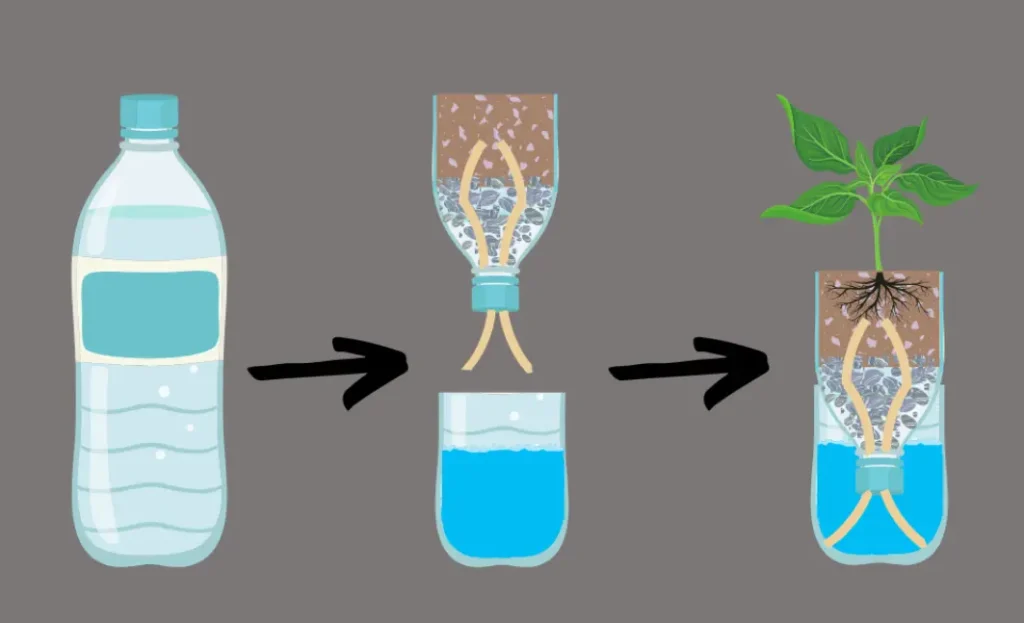
The wick hydroponics system is much easier to install, which makes it an ideal choice for people who are new to hydroponics or beginners. It is easy to assemble and needs less equipment.
Low Maintenance
The wick hydroponics system needs less upkeep because it has no complex components or mechanical elements. It operates passively once set up, meaning neither pumps nor timers need to be installed.
Cheaper Option
One of most affordable hydroponic systems in the market is the wick hydroponics system. Because it requires just wicks, a reservoir, and growing medium, it’s a good option for growers that have limited funds.
Versatile in Nature
Numerous kinds of plants, such as herbs, leafy greens, and miniature flowering plants, can be cultivated with the wick hydroponics system. It goes well with a range of growing media, giving growers the freedom to choose the substrate that most closely fits the requirements of their plants.
Water Efficiency
One renowned feature of the wick system is its water efficiency. Water waste is reduced through the use of a passive wicking process, in which the growing medium takes water from the reservoir and distributes it to the plant roots.
Cons:
Limited Control on Nutrient Flow
There is less control over nutrient levels with the wick system than with advanced hydroponic systems. Because nutrients are entirely dependent on the water in the reservoir, some plants might not get enough nutrients or possess imbalances.
Slow Growth Rate
The wick hydroponics system plant’s have slower growth rates than systems with active nutrient circulation because of its passive structure. This leads to lower rate of nutrient supply may have a direct effect on plant output and growth.
Clogging Issue
If the wrong type of growing media or wicks are employed, the wick system is prone to choking. Blockages stop the flow of nutrients and water, which is not good for the health of plants.
Limited Scale
The wick technique works effectively for hobby or small-scale gardening. Large operations or commercial production may find it difficult due to its limits in terms of growth rates and nutrient control.
Environment Sensitive
Due to its passive nature, the wick system is more susceptible to changes in humidity and temperature. in this technique, the wicking motion is blocked by extreme weather, which ultimately affects the transport of nutrients and water.
Important Factors to Consider
There are four vital factors that should be considered by every grower while establishing wick hydroponics system which are as follows:
Wicking Material
Winter fabric, known for its exceptional absorption capabilities, has the ability to tear into long segments.
Since synthetic fibers are more durable than natural fibers, such as nylon or polyethylene, they are a good choice for wicks.
Growing Medium
A 70/30 mixture of perlite and coco is an excellent example of an efficient growing medium because of its remarkable capacity to retain water. Furthermore, several soilless mixtures are good options because of their ability to absorb moisture.
Reservoir
Since the system’s efficiency depends on the rate at which the water rises via the wick, it’s best to frequently replenish the reservoir.
Suitable Plants
The Grower can generate a variety of crops using wick hydroponics, such as guava, grape, sweet potato, corn, galangal, carrot, and more.
Final Remarks
A special space appears in the hydroponics world regarding hydroponic wick systems. It is relatively easy in installation and maintenance is strongly connected with its limitations. Concerning hydroponics, this approach functions as the greatest and most efficient method going forward. Once the grower gets the basic knowledge of this system, he will be more confident and brave enough to try larger, more complicated systems, which will enable him to grow more vegetables in more forms.
Latest Post
- Nutrients Required for Hydroponic Farming
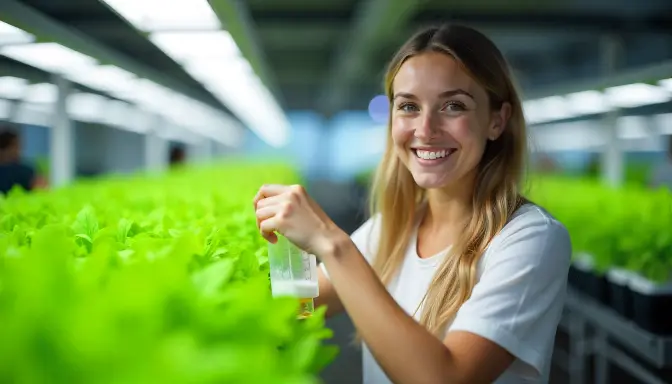
- Types of Grow Light for Hydroponics

- Factors Affect Nutrient Solution in Hydroponics

- How to Maintain pH and EC in Hydroponics System

- How to Clean Hydroton Clay Pebbles For Reuse
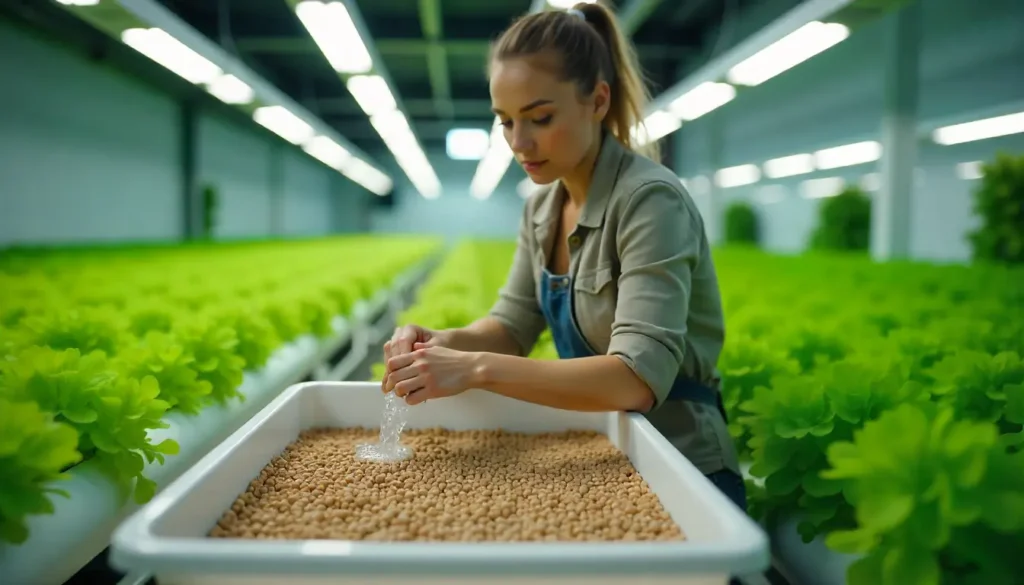
- How to Clean Hydroton Clay Pebbles for Reuse
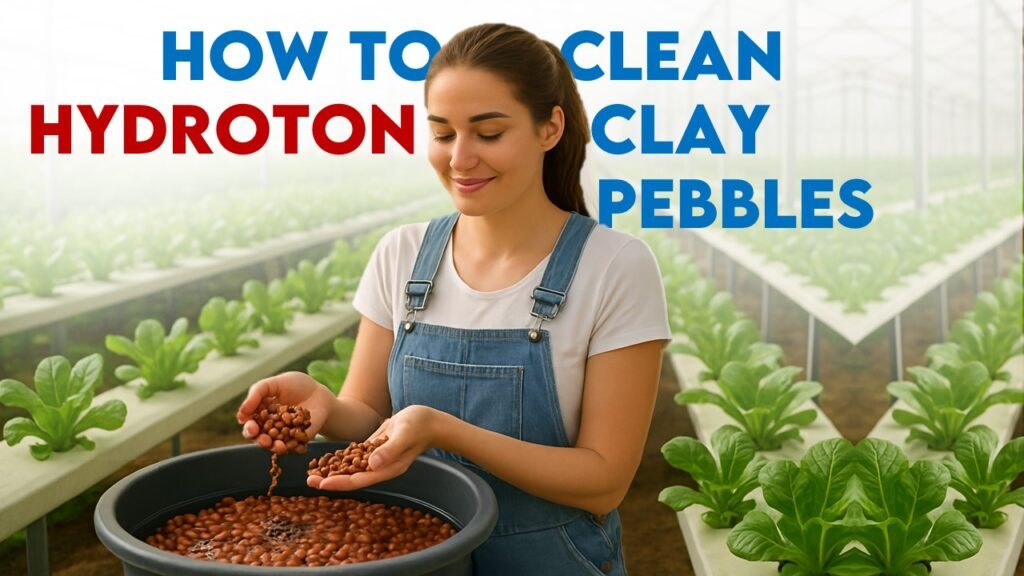
- Role of Grow Light in Hydroponics

- How to Grow Hydroponic Peppers (Bell Peppers Hydroponics)
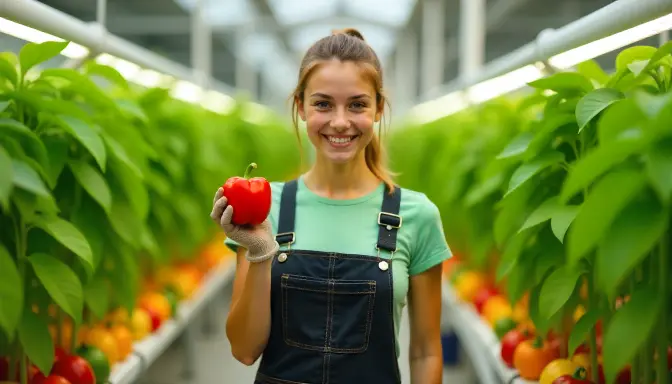
- Aeroponics vs Hydroponics vs Aquaponics
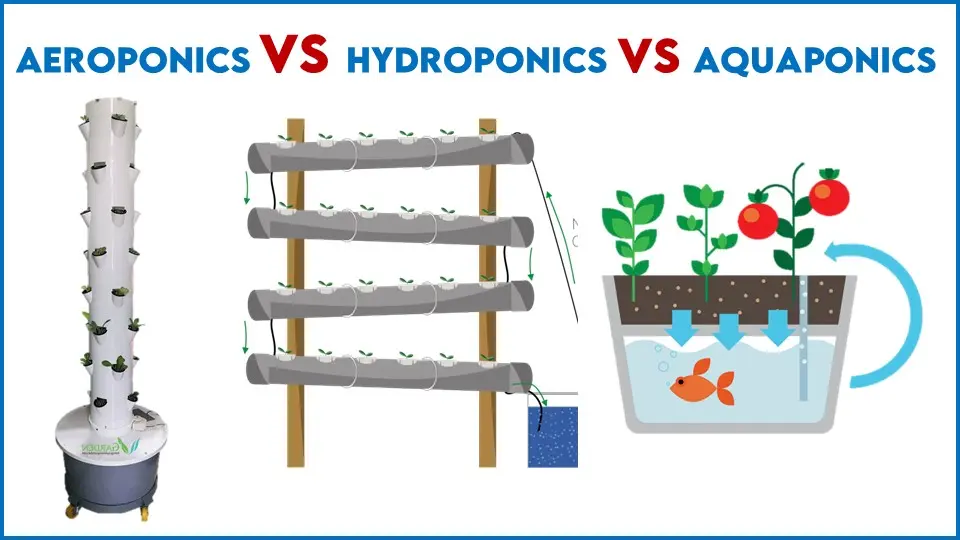
Join Our Hydroponics Growers Group!
Connect with fellow hydroponics enthusiasts, share your ideas, ask questions, and grow together as a community.
👉 Join WhatsApp Group
